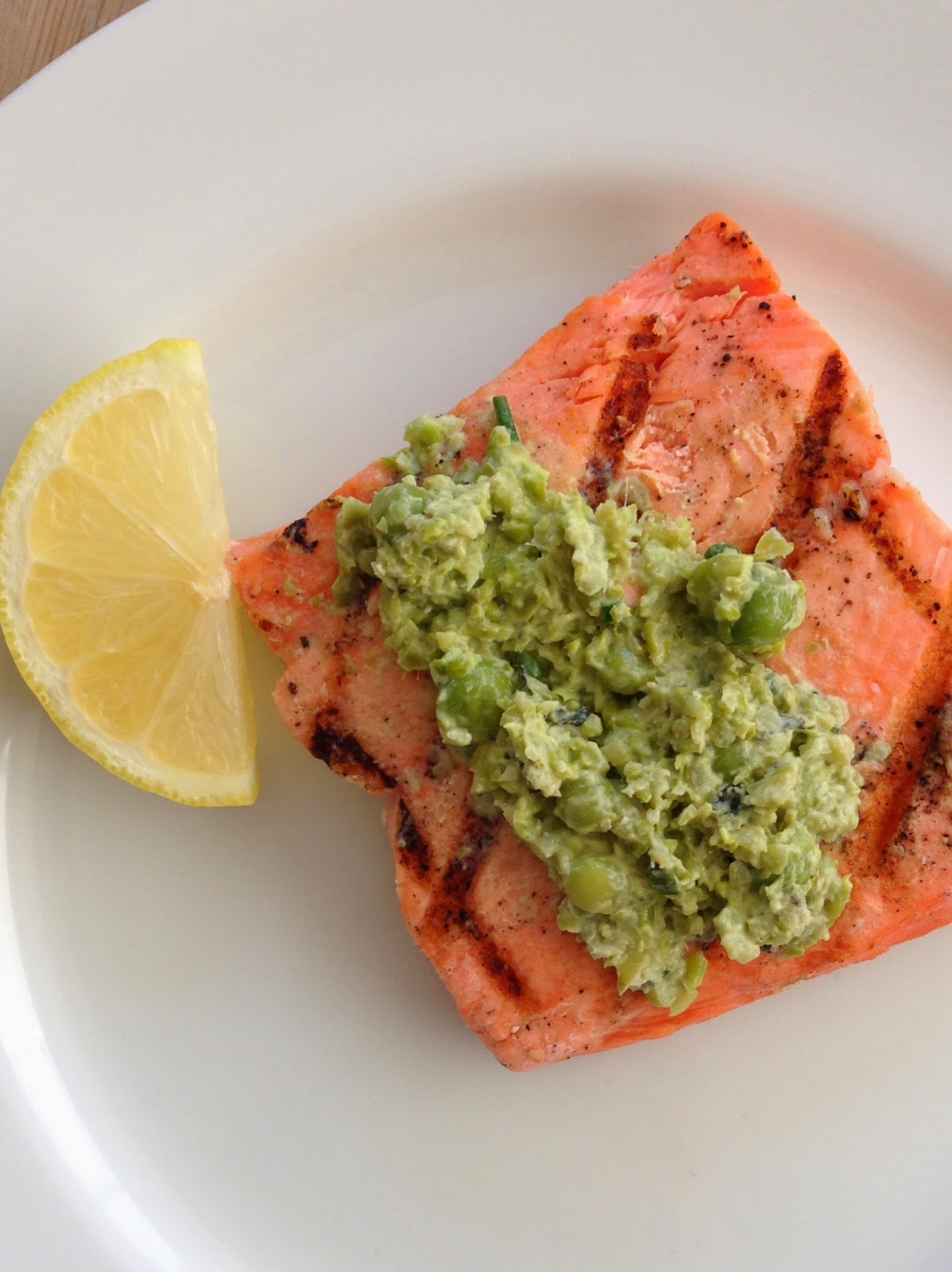The wild salmon is fantastic at Bi-Rite this week, and they've been grilling and serving it with a spring pea hummus that is quite simply unforgettable. After a little bit of begging, I convinced the talented chefs at Bi-Rite to share their family recipe with all of you.
Green and bright with a creamy, crunchy texture, this spring pea hummus is loaded with antioxidants and adds an unexpected kick to your salmon dish. The recipe is large enough for leftovers, so try it as a dip for carrots, cucumbers, peppers and other raw veggies, or roll it into organic turkey slices for an afternoon snack.
Ingredients:
1 LB Fresh Snap Peas (stems removed)
1 Bag Frozen English Peas (thawed and drained)
1.5 LBS Unshelled Fresh English Peas
2 oz Tahini
1 Cup Sour Cream
1/4 Cup Mint (finely chopped)
2 TBL Garlic (minced)
I Bunch Chive (finely chopped)
2 TBL Lemon Zest
Sea Salt
Pepper
Blanch the snap peas and English peas in salted water for about 30 seconds each. The fresh English peas may take longer given their size, so blanch them separately. Shock the peas in water and drain very well.
Combine the drained and dry peas with the sour cream in a food processor, and add the garlic, lemon zest and tahini. Note: Set some of the fresh English peas aside to add in at the very end for texture. Pulse the mixture until semi-smooth.
Add the salt, pepper and herbs and adjust final seasoning with lemon juice and salt.
We all know wild salmon is loaded with heart-healthy and anti-inflammatory omega-3s, but recent research shows that green peas are an excellent source of omega-3 fats in the form of alpha-linolenic acid (ALA). Foods that are high in healthy fats help us to recover during periods of high stress, so be sure to try this dish after a tough workout for optimal results.












